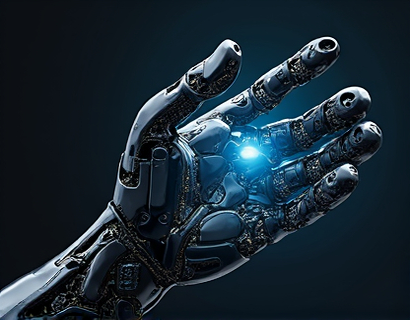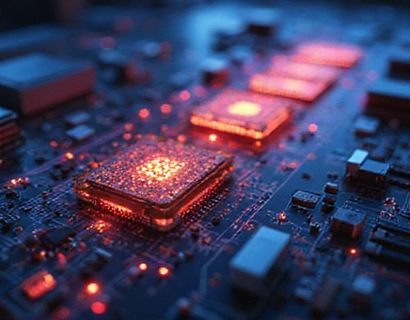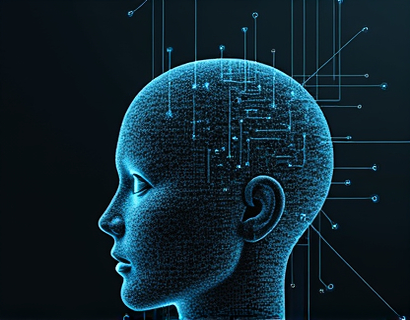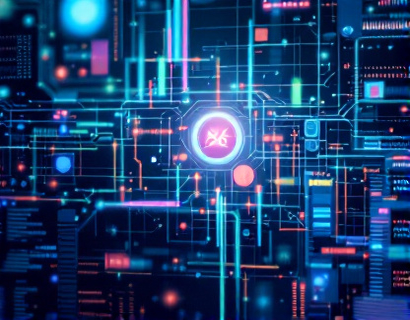Unlocking Decentralized Potential: Mastering the Software Stack for Universal Organization Excellence
In the rapidly evolving landscape of decentralized systems, the quest for excellence in governance and operations has led to the emergence of advanced software solutions designed to harness the full potential of decentralized organizations. This guide delves into the intricacies of building universal decentralized organizations, focusing on the software stack that empowers seamless collaboration, transparency, and efficiency. For enthusiasts dedicated to decentralized systems, understanding and mastering this software stack is crucial for achieving organizational excellence.
The foundation of any decentralized organization lies in its ability to govern and operate in a manner that is both transparent and efficient. Traditional centralized systems often struggle with these aspects due to inherent bottlenecks and lack of trust among participants. Decentralized governance, on the other hand, distributes power and decision-making across a network, reducing the risk of single points of failure and enhancing trust among stakeholders. However, realizing the full potential of decentralized governance requires a robust software stack that can support complex operations and interactions.
Understanding Decentralized Governance
Decentralized governance refers to the processes and mechanisms through which a decentralized organization makes decisions and manages its operations. Unlike centralized systems where a single entity or group holds authority, decentralized governance distributes power among network participants. This distribution is often facilitated by smart contracts and blockchain technology, which ensure that rules and protocols are enforced automatically and transparently.
The key components of decentralized governance include token-based voting systems, decentralized autonomous organizations (DAOs), and transparent record-keeping. Token-based voting allows stakeholders to propose and vote on proposals, ensuring that decisions reflect the collective will of the network. DAOs are organizations governed by rules encoded in smart contracts, enabling automated and trustless execution of governance processes. Transparent record-keeping, typically on a blockchain, ensures that all transactions and decisions are immutable and verifiable by anyone in the network.
Building a Robust Software Stack
To build a universal decentralized organization, a comprehensive software stack is essential. This stack comprises various layers and tools that work together to create a seamless, efficient, and transparent system. The software stack can be broadly categorized into four main layers: the data layer, the smart contract layer, the application layer, and the user interface layer.
Data Layer
The data layer is the foundation of the software stack, responsible for storing and managing data in a decentralized and secure manner. Blockchain technology plays a crucial role here, providing a tamper-proof ledger for all transactions and data entries. However, traditional blockchains can be limited in terms of scalability and performance. To address these issues, a combination of blockchain platforms and off-chain storage solutions can be employed.
For instance, using a primary blockchain for critical transactions and a secondary storage solution like IPFS (InterPlanetary File System) for larger data files can optimize performance. This hybrid approach ensures that data is both secure and accessible, while also reducing the load on the blockchain network. Additionally, implementing data sharding and layer 2 solutions can further enhance scalability and reduce transaction costs.
Smart Contract Layer
The smart contract layer is the backbone of decentralized governance and operations. Smart contracts are self-executing contracts with the terms of the agreement directly written into code. They automate and enforce the rules and protocols of the organization, ensuring that actions are taken precisely as intended without the need for intermediaries.
Popular blockchain platforms like Ethereum, Solana, and Polkadot offer robust smart contract capabilities. When choosing a platform, consider factors such as transaction speed, gas fees, and the level of community support. It's also important to ensure that the smart contracts are audited for security to prevent vulnerabilities that could be exploited. Implementing best practices such as using established frameworks and conducting thorough testing can help mitigate risks.
Application Layer
The application layer builds upon the data and smart contract layers to create functional applications that support the organization's goals. These applications can range from simple voting systems to complex DAOs with multiple functionalities. The choice of programming languages and frameworks depends on the specific requirements and the target blockchain platform.
For example, Solidity is commonly used for Ethereum-based smart contracts, while Vyper is a safer alternative also supported on Ethereum. For polychain environments, frameworks like Substrate and Plutus offer flexibility and interoperability. The application layer should be designed with modularity in mind, allowing for easy updates and integration of new features without disrupting existing functionalities.
User Interface Layer
The user interface (UI) layer is the front-facing component that interacts with users and provides an intuitive experience. A well-designed UI is crucial for user adoption and engagement, especially in decentralized systems where users may have varying levels of technical expertise. The UI should facilitate easy navigation, clear communication of information, and seamless interaction with the underlying smart contracts and data layers.
Front-end frameworks like React, Vue.js, and Angular can be used to build responsive and interactive UIs. For decentralized applications (dApps), integrating with web3 libraries such as Web3.js or Ethers.js is essential for connecting to the blockchain and managing tokens and contracts. Ensuring that the UI is accessible and user-friendly can significantly enhance the overall user experience and promote wider adoption.
Enhancing Collaboration and Transparency
One of the primary advantages of decentralized organizations is their ability to foster collaboration and transparency. The software stack plays a pivotal role in enabling these qualities through various features and tools.
Firstly, decentralized communication platforms can be integrated into the application layer to facilitate real-time collaboration among network participants. These platforms can support features like chat, file sharing, and project management, all while ensuring that communications are secure and tamper-proof. Utilizing blockchain-based messaging protocols can further enhance security and privacy.
Transparency is another cornerstone of decentralized governance. By leveraging the immutable nature of blockchain, all transactions and decisions can be recorded and viewed by anyone in the network. This transparency builds trust and accountability, as participants can verify the integrity of the organization's operations at any time. Dashboards and analytics tools can be developed to provide real-time insights into key metrics and performance indicators, making it easier for stakeholders to monitor and engage with the organization.
Ensuring Efficiency and Scalability
For decentralized organizations to thrive, the software stack must not only be secure and transparent but also efficient and scalable. High transaction fees and slow processing times can hinder user adoption and limit the organization's potential. Therefore, optimizing the software stack for performance is crucial.
One approach to improving efficiency is to use sidechains or plasma networks, which allow for faster and cheaper transactions off the main blockchain. These solutions can handle a higher volume of transactions while maintaining security, reducing the burden on the primary blockchain. Additionally, implementing state channels and off-chain computation can further enhance performance by moving certain processes outside the blockchain.
Scalability is another critical aspect, especially as the organization grows and the number of participants increases. Layer 2 solutions such as rollups and sharding can significantly boost transaction throughput and reduce costs. These technologies enable the blockchain to process multiple transactions in a single block, improving overall efficiency without compromising security.
Case Studies and Real-World Applications
To better understand the practical applications of this software stack, let's explore a few case studies of decentralized organizations that have successfully implemented these solutions.
One notable example is a decentralized finance (DeFi) platform that uses a combination of Ethereum and layer 2 solutions to provide low-cost, high-speed trading and lending services. The platform's smart contracts automate the trading process, ensuring fairness and transparency. The UI is built with React, providing an intuitive interface for users to interact with the platform. By leveraging IPFS for decentralized storage, the platform ensures that data is resilient and accessible.
Another example is a decentralized governance platform for a community-driven project. This platform uses a hybrid blockchain approach, with a primary blockchain for critical governance decisions and IPFS for storing extensive documentation and community feedback. The application layer is built with Solidity and Substrate, offering modularity and interoperability. The UI is designed with Vue.js, ensuring a seamless user experience for participants from different technical backgrounds.
These case studies demonstrate the versatility and potential of the software stack in creating effective decentralized organizations. By carefully selecting and integrating the right tools and technologies, enthusiasts can build robust systems that enhance collaboration, transparency, and efficiency.
Conclusion
Unlocking the full potential of decentralized governance and operations requires a deep understanding of the software stack that supports these systems. By building a comprehensive stack that includes a robust data layer, secure smart contract layer, functional application layer, and intuitive UI layer, organizations can achieve unprecedented levels of collaboration, transparency, and efficiency.
As the decentralized landscape continues to evolve, staying informed and adaptable is key. Enthusiasts and practitioners should continually explore new technologies and best practices to enhance their decentralized organizations. With the right tools and a clear vision, the future of decentralized governance and operations looks promising and full of possibilities.










































